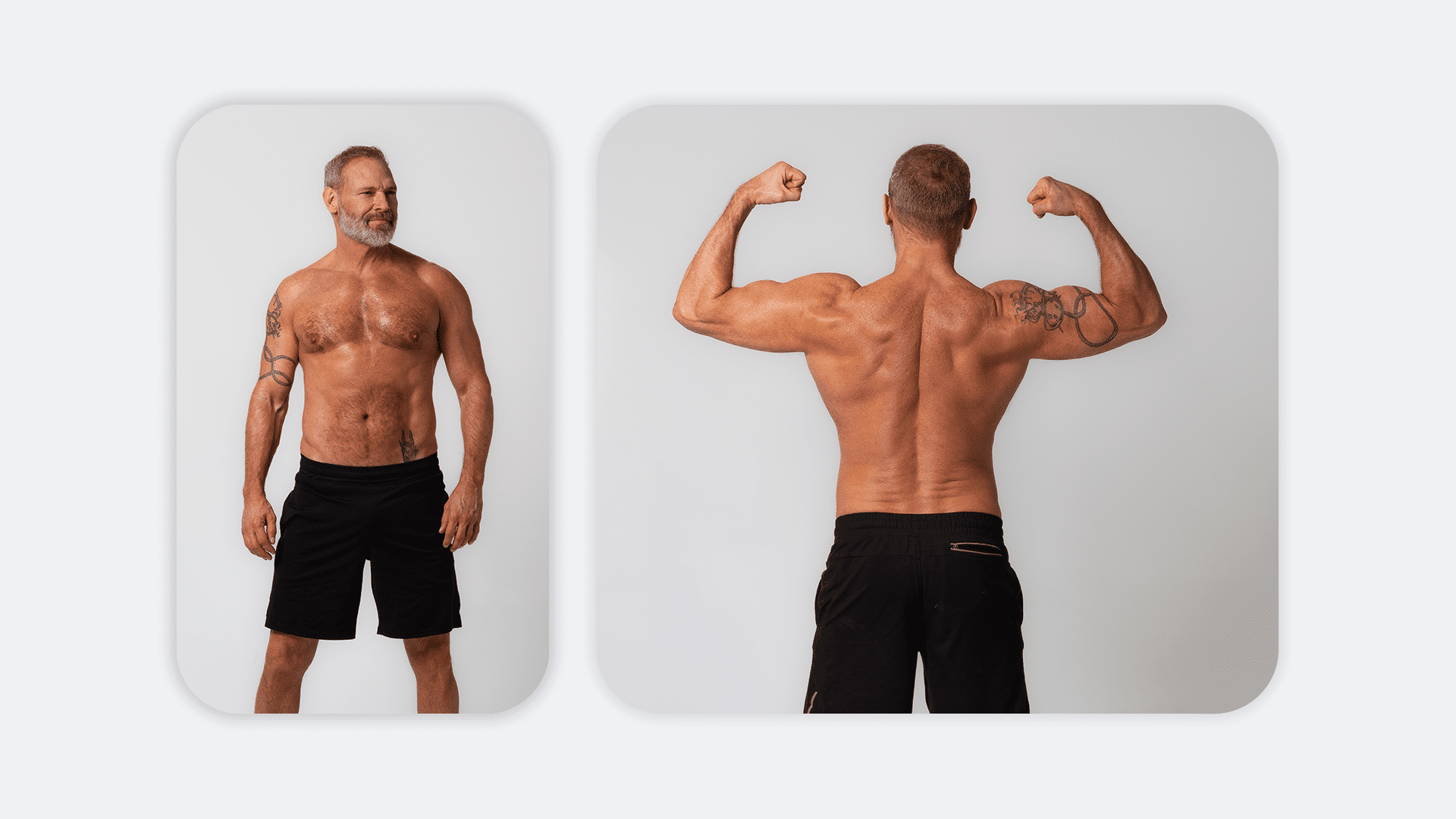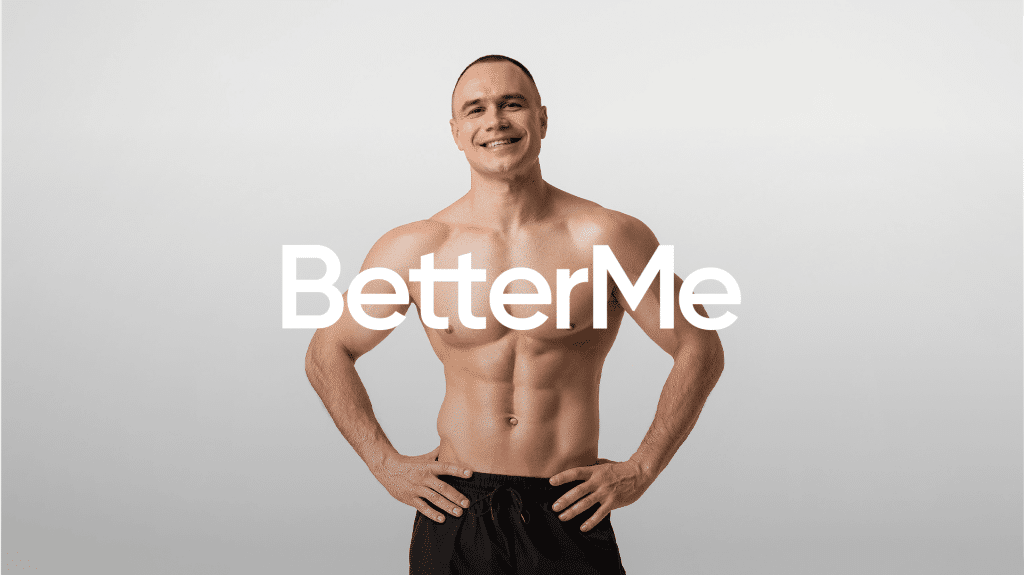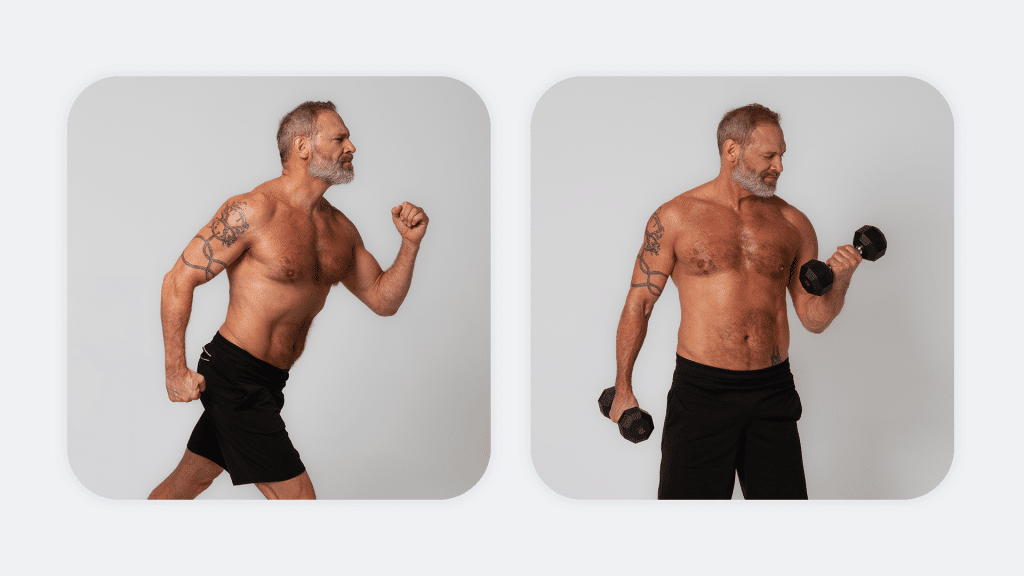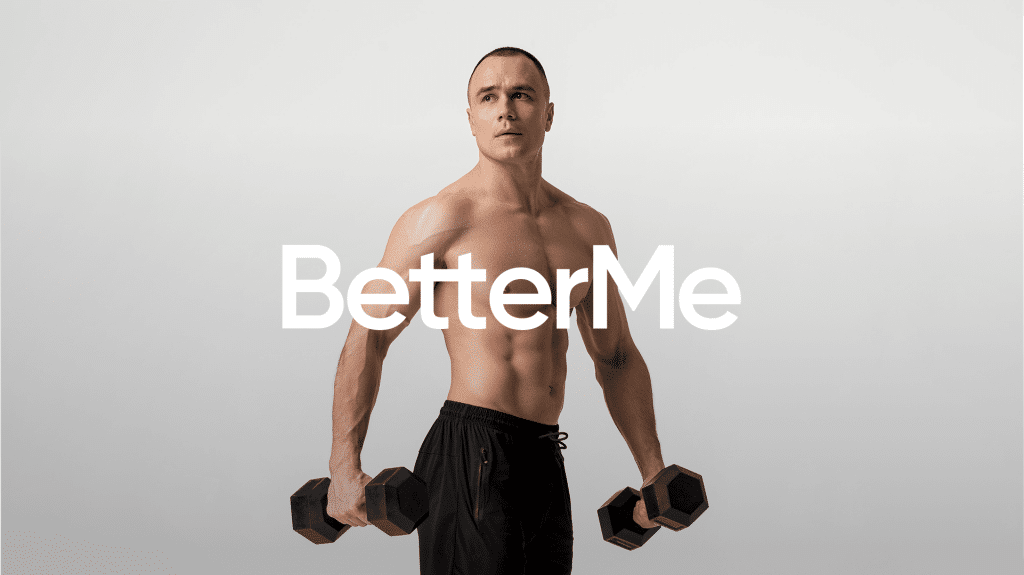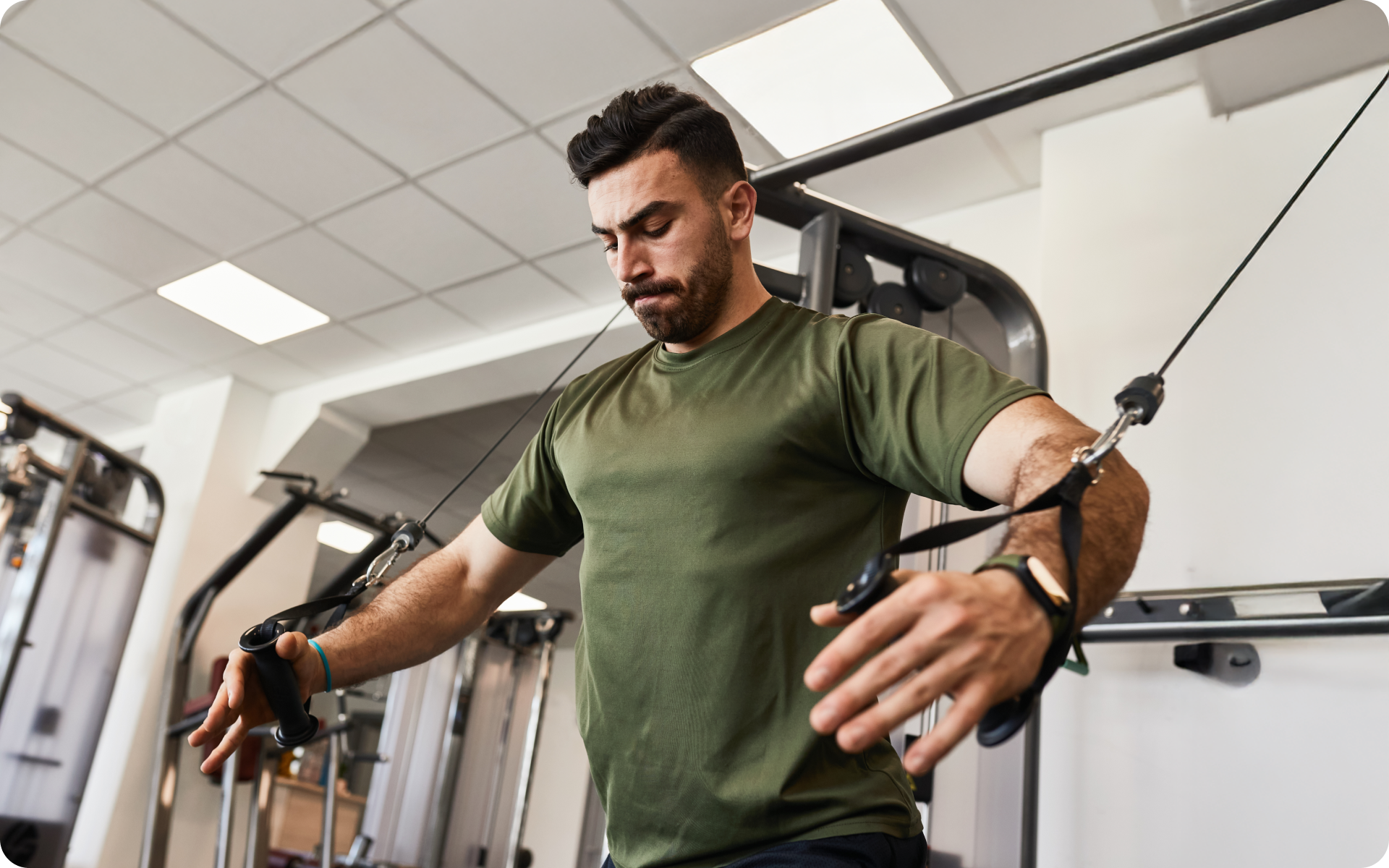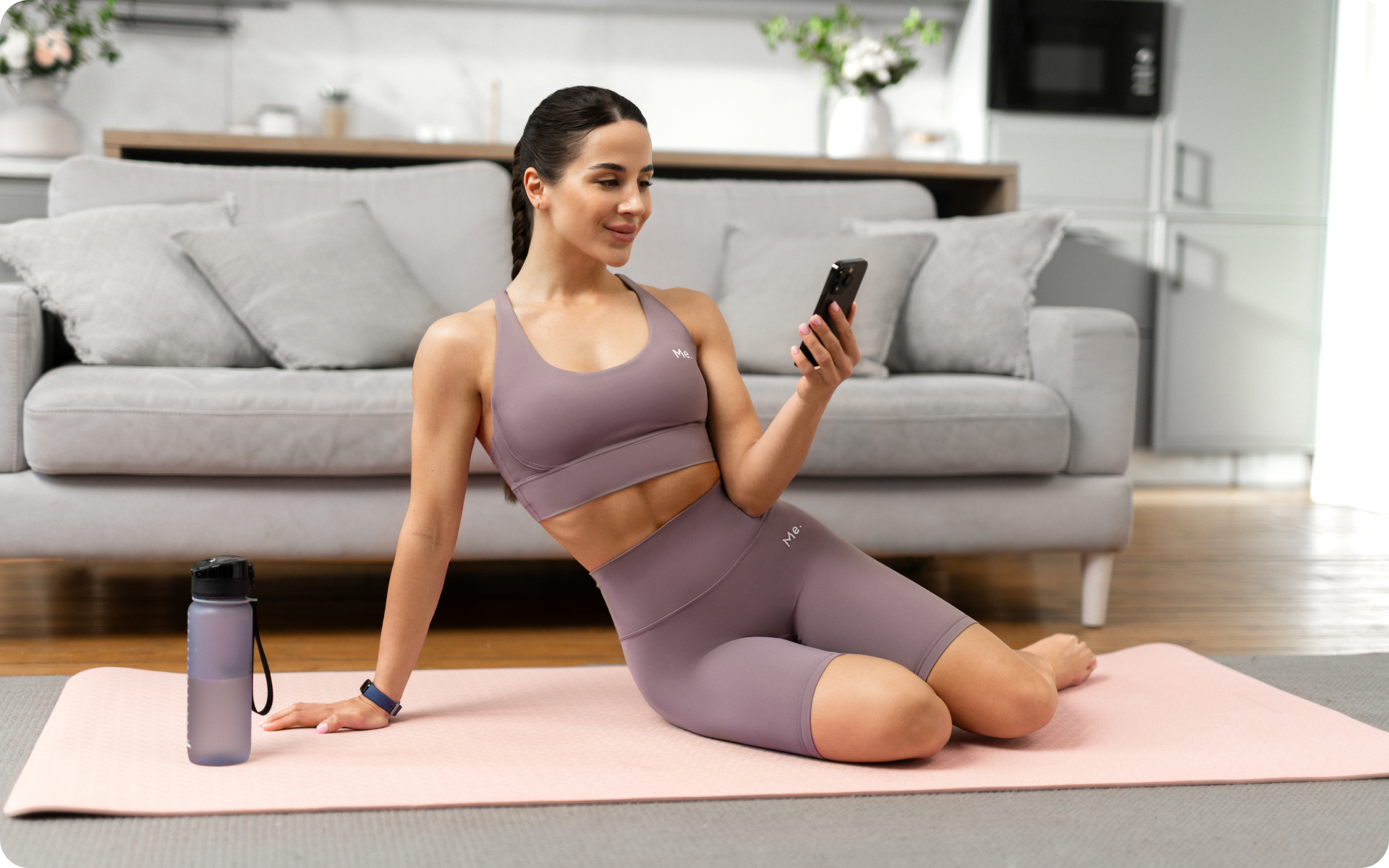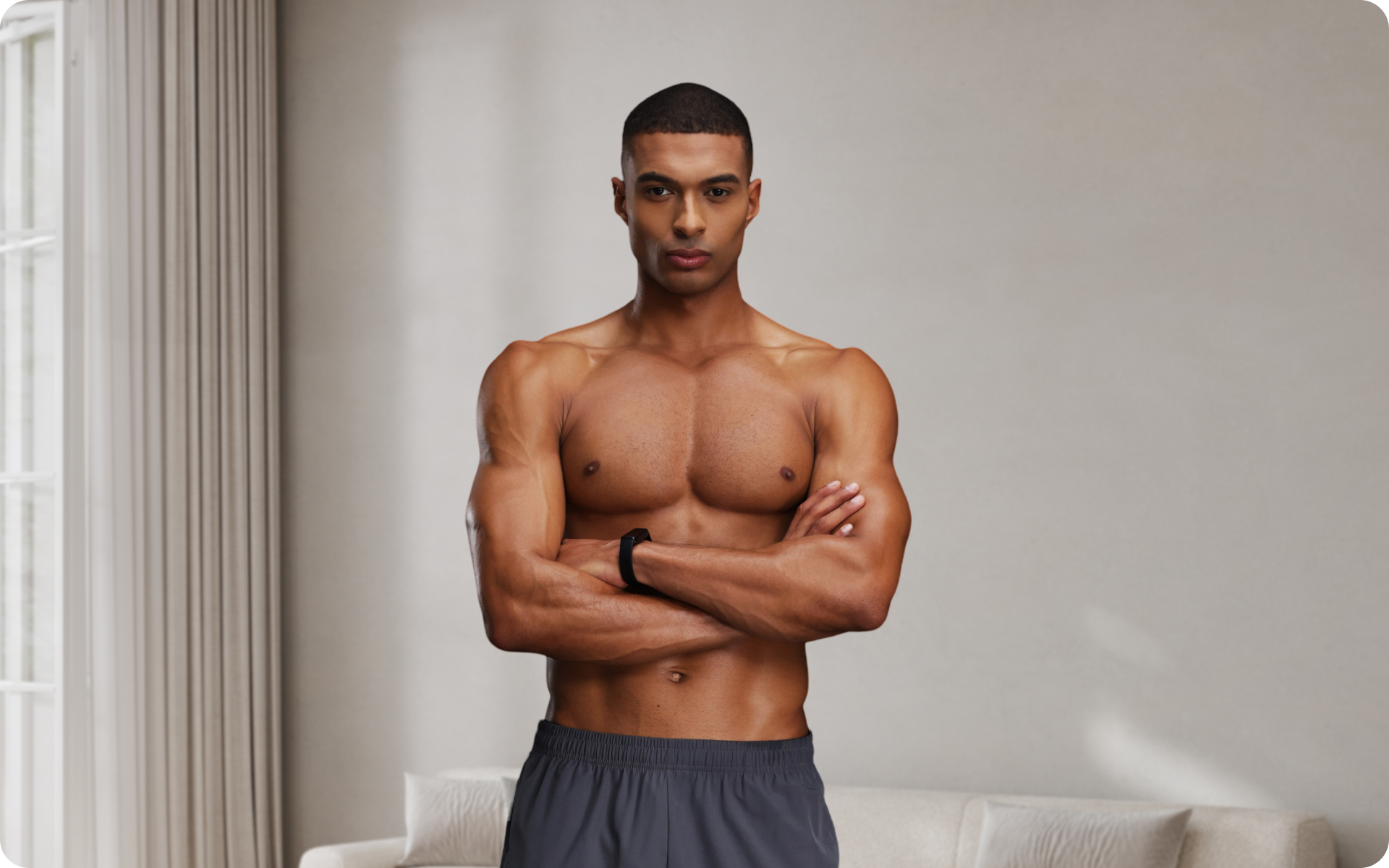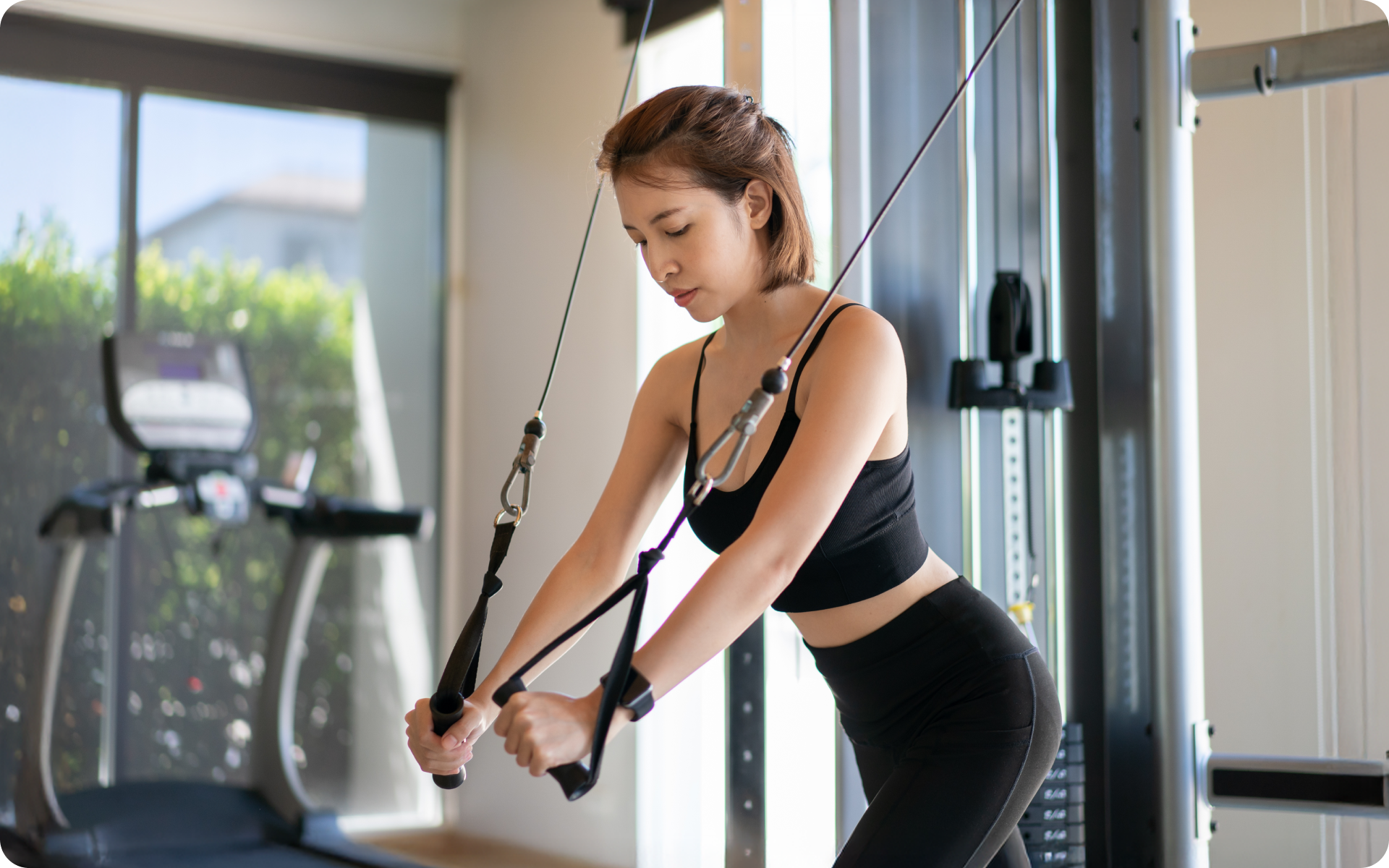Calisthenics is more than the latest Fit Tok trend; it’s an age-old discipline that has stood the test of time, transcending fads and quick fixes to cement its place as a foundation of physical fitness.
Rooted in the practice of using body weight as resistance, this type of exercise builds and tones muscles while also enhancing overall strength, agility, and flexibility.
With minimal equipment required, calisthenics is the perfect choice for those who enjoy working out in the comfort of their own homes or in the great outdoors.
But don’t be fooled by its simplicity – calisthenics can be challenging and intense. It will push your limits and transform your calisthenics workouts.
When it comes to upper-body training, calisthenics offers a diverse range of exercises that target multiple muscle groups simultaneously, which leads to more balanced strength and development.
In this guide, we will introduce you to seven upper-body calisthenics workouts that will transform your workout and increase your strength, endurance, and confidence.
Can You Build Upper Body With Calisthenics?
Yes, you can absolutely build your upper-body muscles with calisthenics.
Calisthenics is a versatile form of exercise that uses body weight as resistance. It’s an effective way of building strength and muscle in the upper body. Here’s how it works:
When engaging in calisthenics, you’re essentially using your body weight as a tool for resistance (5). This resistance will help stimulate your muscles, which leads to increased strength and muscle growth (4).
Exercises such as push-ups, pull-ups, and dips primarily target the chest, back, and arms. One of the key advantages of calisthenics is its ability to work multiple muscle groups simultaneously.
For example, pull-ups work your biceps and back while also engaging your shoulders and core. Similarly, push-ups target the chest, triceps, and deltoids, while also engaging the abs. This full-body engagement leads to more balanced muscle development.
In traditional weight lifting, you increase the weight you lift to progressively overload your muscles, but with calisthenics, you adjust the difficulty of the exercises. As you become stronger, you can transition from basic push-ups to diamond push-ups or one-handed push-ups. The concept of progressive overload helps stimulate continuous muscle growth (2).
Calisthenics isn’t only about building muscle; it’s also great for boosting endurance. Many calisthenics exercises require the performance of a high number of repetitions, which can help improve muscular endurance over time. In addition, as these exercises often engage multiple muscle groups, they also offer a cardiovascular workout (6).
Finally, calisthenics can enhance flexibility and mobility, both of which are crucial for overall fitness and injury prevention. Many exercises involve a full range of motion, which can help improve joint mobility and flexibility.
BetterMe app will provide you with a host of fat-frying fitness routines that’ll scare the extra pounds away and turn your body into a masterpiece! Get your life moving in the right direction with BetterMe!
Can You Build Big Shoulders With Calisthenics?
Calisthenics works your entire upper body and specifically targets the shoulder muscles. It’s an effective form of an upper-body body-weight workout with no equipment needed.
Understanding Shoulder Anatomy
The shoulder is primarily made up of two muscle groups: the deltoids and the rotator cuff group. The deltoids, which are visible on the outside of the body, are responsible for most shoulder movements. The rotator cuff group, which is comprised of four smaller muscles, provides stability and assists in various shoulder movements.
How Calisthenics Targets Shoulder Muscles
Calisthenics exercises engage both of these muscle groups to build strength and size. For example, push-ups, a staple in any upper-body calisthenics workout, engage the anterior (front) deltoids. Variations such as pike push-ups or decline push-ups shift more focus onto the shoulders.
Pull-ups, which are another fundamental upper-body calisthenics exercise, target the lateral (side) deltoids and other upper-body muscles (3). Advanced upper-body calisthenics moves such as handstands and planches heavily involve the shoulders and require considerable shoulder strength.
Beginner to Intermediate Progression
Even if you’re a beginner, you can start building your shoulder strength with calisthenics at home. You can start with simpler exercises such as push-ups and dips and gradually increase the number of repetitions you perform as your strength improves.
As you progress to the intermediate level, you can incorporate more challenging exercises into your upper-body calisthenics workout, such as handstand push-ups or commandos (transitioning from elbow plank to high plank).
Advanced Calisthenics for Shoulder Development
For those who are already comfortable with intermediate moves, advanced upper-body calisthenics provides the next challenge. Exercises such as planche push-ups and one-arm handstands demand a high level of shoulder strength and control, which leads to significant muscle growth and development over time.
Can Calisthenics Athletes Build a Big Chest?
Yes, calisthenics athletes can build a big chest. The key lies in understanding the anatomy of the chest muscles and knowing how to target them effectively with an upper-body body-weight workout that requires no equipment.
Chest Muscles Anatomy
The chest is primarily composed of two muscles: the pectoralis major and the pectoralis minor. The pectoralis major is the larger, more visible muscle that gives the chest its size and shape. The pectoralis minor, although it is smaller and located beneath the pectoralis major, plays a crucial role in shoulder and chest movements.
Read more: 30-Day Calisthenics Workout Plan: 4 Customizable Calisthenics Plans For All Fitness Levels.
How Calisthenics Targets Chest Muscles
Calisthenics exercises can effectively engage both of these muscles, which leads to growth and development. For example, push-ups, a staple in any upper-body calisthenics workout, primarily target the pectoralis major (1).
By adjusting the placement of your hands during a push-up, you can alter the part of the chest muscle that is being worked the most. Wide push-ups target the outer chest, whereas diamond push-ups focus on the inner chest.
Dips are another common upper-body calisthenics exercise that works the chest muscles, particularly when you lean forward during the movement. In addition, advanced upper-body calisthenics moves such as planche push-ups heavily engage the chest muscles.
Progression for All Levels
Whether you’re a beginner or at an intermediate level, you can start building your chest strength with calisthenics at home. Beginners can start with standard push-ups and dips and gradually increase the number of repetitions as their strength improves, while intermediate athletes can incorporate more challenging variations, such as decline push-ups or archer push-ups, into their upper body calisthenics workout.
For those who have already mastered intermediate moves, advanced upper-body calisthenics provides the next challenge. Exercises such as planche push-ups or one-arm push-ups demand a high level of chest strength and control, which leads to significant muscle growth and development over time.
7 Upper-Body Calisthenics Exercises For Your Workout
Below are the best upper-body calisthenics exercises that go beyond the classic push-up and dip duo. By incorporating these exercises into your upper-body calisthenics workout, you will target every muscle group in the shoulders, arms, chest, and back, helping you build muscle and strength.
Archer Push-ups
Archer push-ups are a variation of the standard push-up that targets the chest, shoulders, and triceps with an increased emphasis on one side of the body at a time. This exercise is an excellent way to build unilateral strength and balance.
To perform archer push-ups:
- Start in a traditional push-up position, but spread your hands wider apart and point your fingers out to the sides
- Lower your body toward one hand while straightening the opposite arm, mimicking the motion of drawing a bow
- Push back up to the starting position and repeat on the other side
Typewriter Pull-ups
Typewriter pull-ups are a challenging variation of the standard pull-up that works the back, biceps, and shoulders. They also engage the core and improve grip strength.
To execute typewriter pull-ups:
- Grasp a pull-up bar with an overhand grip, hands wider than shoulder-width apart
- Pull yourself up until your chin is level with the bar
- Move your body horizontally from one side to the other, like a typewriter carriage
- Return to the center and lower your body to the starting position
L-Sit Dips
L-sit dips are an advanced calisthenics exercise targeting the chest, triceps, and shoulders. It is also a core calisthenics exercise as it engages the core due to the L-sit position.
Here’s how to do L-sit dips:
- Position yourself on parallel bars as you would for a regular dip
- Extend your legs straight out in front of you, forming an ‘L’ shape with your body
- Lower your body until your upper arms are parallel to the ground while maintaining the L-sit
- Push back up to the starting position
Tuck Planche Push-ups
Tuck planche push-ups are an advanced upper-body calisthenics exercise targeting the chest, shoulders, triceps, and core. This exercise also improves balance.
Here’s how to execute tuck planche push-ups:
- Get into a push-up position with your hands slightly wider than shoulder-width apart
- Lift your feet off the ground by tucking your knees into your chest, balancing your weight on your hands
- Lower your body toward the ground, then push back up to the tuck planche position
One-Arm Push-ups
One-arm push-ups are a challenging upper-body exercise that targets the chest, shoulders, triceps, and core, while building unilateral strength.
Instructions for one-arm push-ups:
- Start in a regular push-up position, but with your feet wider apart for stability
- Place one hand behind your back and lower your body using the other arm
- Push back up to the starting position and switch arms
Handstand Push-ups
Handstand push-ups are an advanced calisthenics exercise that primarily targets the shoulders, triceps, and upper chest, while engaging the core.
To perform handstand push-ups:
- Perform a handstand against a wall for support
- Lower your body toward the ground by bending your elbows
- Push back up to the starting position
Front Lever Raises
Front lever raises are a highly advanced calisthenics exercise targeting the back, shoulders, and core, while improving balance and body control.
Here’s how to do front lever raises:
- Hang from a pull-up bar with an overhand grip
- Keeping your body straight, raise your body to a horizontal position, so you’re parallel to the ground
- Lower your body back to the starting position
BetterMe app will kick you out of the mental funk, shake off your extra weight, rid you off your energy-zapping habits, and help you sculpt the body of your dreams. Intrigued? Hurry up and change your life for the better!
How Do I Start Calisthenics On My Upper Body?
How to start calisthenics on upper body? Starting upper-body calisthenics beginner exercises is easy and requires minimal equipment. You can start by mastering basic push-ups, dips, pull-ups, and chin-ups with a few repetitions each day. As your strength increases, you can progress to more upper-body calisthenics workout intermediate exercises such as decline push-ups or one-arm push-ups.
It is important that you remember to always prioritize proper form above all else. Use a mirror to monitor your posture and practice engaging the correct muscle groups for each exercise.
Once you’ve got the basics covered, you may wish to take a more specific approach to starting calisthenics on your upper body:
Developing a Baseline of Strength
Before jumping into specific calisthenics exercises, it’s important to establish a baseline level of strength. This isn’t about doing countless push-ups or pull-ups immediately and is about conditioning your muscles and joints for the unique demands of calisthenics.
- Scapular Shrugs: Start with exercises that target the often neglected scapular muscles, which are crucial for stability during calisthenics. Hang from a bar with your arms fully extended and simply shrug your shoulders up and down.
- Negative Reps: If you find standard pull-ups or dips too challenging, start with negative reps. Jump or step up to the top of the movement and then lower yourself as slowly as possible. This eccentric training can help build strength rapidly.
Mastering Body Tension
A key aspect of calisthenics is total body tension, where you engage multiple muscle groups even while focusing on a specific area such as the upper body. Here are two exercises to use for developing this skill:
- Plank Variations: A plank isn’t just a core exercise. By actively pushing through your shoulders and squeezing your glutes, you can turn it into a full-body tension drill. Experiment with variations such as the RKC plank, where you envision pulling your elbows towards your toes (without actually moving them) as a means of creating extra tension.
- Hollow Body Holds: This gymnastics staple is excellent for training yourself to maintain body tension. Lie on your back, extend your arms and legs, then lift your limbs and upper back off the ground while keeping your lower back pressed to the floor.
Applying Specific Strength to Calisthenics Movements
Now you’ve built a foundation, you can start to apply your strength to specific upper-body calisthenics exercises.
- Graduated Push-up Variations: Rather than sticking to standard push-ups, graduate through increasingly difficult variations. Start with incline push-ups (hands elevated), progress to regular push-ups, and then move on to decline push-ups (feet elevated). This gradual progression allows for consistent improvement without your muscles becoming overwhelmed.
- Isometric Holds: For pull-up training, you should work on isometric holds. Jump up to the top of the pull-up position and hold for as long as possible. This will help you develop grip strength and become comfortable with supporting your weight on the bar.
Incorporating Skill Work
Finally, you should start incorporating some skill work into your routine. This is not only fun but will also help improve proprioception and body awareness, both of which are crucial aspects of calisthenics.
- Handstands: Start with wall-assisted handstands before progressing to free-standing handstands. This exercise is excellent for shoulder strength and body control.
- L-Sits: L-sits can be done on the floor or using parallettes. They’re quite challenging but they are excellent for improving core strength and shoulder stability.
Read more: Types Of Calisthenics To Master Bodyweight Training.
Frequently Asked Questions
How big can you get with only calisthenics?
The size you can achieve with calisthenics is dependent on several factors such as your genetics, diet, consistency, and workout intensity. Calisthenics exercises use body weight for resistance, which certainly helps build muscle mass.
However, you may not achieve the same bulk as someone who lifts heavy weights in the gym. Instead, calisthenics tends to result in a lean, toned physique that demonstrates balanced muscle development.
What gets you bigger, calisthenics or weights?
Both calisthenics and weightlifting can help build muscle and make you bigger. However, if sheer size and bulk are your primary goals, weightlifting may be more effective. Lifting heavy weights will allow for greater progressive overload (the ability to continually increase the demands on your muscles), which is the key to significant muscle growth. However, calisthenics is more about functional strength, flexibility, and body control. It can still help you build a muscular and athletic physique, but it may not provide the same level of bulk as weightlifting.
Is calisthenics 3x a week enough?
Yes, performing calisthenics three times a week can be enough, provided your workouts are well-structured and intense, and you give your body sufficient rest in between to recover and grow. You should split your sessions into different muscle groups or workout types to ensure a balanced approach.
For example, you may focus on push exercises on the first day, pull exercises on the second day, and core and skill work on the third day. It’s important to remember that consistency and progression are key to seeing improvements.
The Bottom Line
Mastering these 7 upper-body calisthenics exercises can significantly enhance your workout routine. From building strength and endurance to improving flexibility and balance, these exercises offer a comprehensive approach to fitness that transcends that of traditional gym workouts.
DISCLAIMER:
This article is intended for general informational purposes only and does not serve to address individual circumstances. It is not a substitute for professional advice or help and should not be relied on for making any kind of decision-making. Any action taken as a direct or indirect result of the information in this article is entirely at your own risk and is your sole responsibility.
BetterMe, its content staff, and its medical advisors accept no responsibility for inaccuracies, errors, misstatements, inconsistencies, or omissions and specifically disclaim any liability, loss or risk, personal, professional or otherwise, which may be incurred as a consequence, directly or indirectly, of the use and/or application of any content.
You should always seek the advice of your physician or other qualified health provider with any questions you may have regarding a medical condition or your specific situation. Never disregard professional medical advice or delay seeking it because of BetterMe content. If you suspect or think you may have a medical emergency, call your doctor.
SOURCES:
- Effect of Progressive Calisthenic Push-up Training on Muscle Strength and Thickness (2018,nih.gov)
- Progression of volume load and muscular adaptation during resistance exercise (2014,nih.gov)
- Pull Ups: Benefits, Muscles Worked, and More ( 2023,inspireusafoundation.org)
- Resistance training – health benefits (2022,betterhealth.vic.gov.au)
- The advantages of body-weight exercise (2022,harvard.edu)
- The cardiovascular health benefits of resistance training (2018,canr.msu.edu)
